The Most Painful Sting You Can Get From an Insect
A sting from this insect is like "walking over flaming charcoal with a 3-inch nail in your heel."

If you've ever been stung by a bee or bitten by a spider, you know it's not exactly a pleasant experience. Thankfully, the insect injuries most of us sustain throughout our lives will be relatively tame compared to the full spectrum of dangerous and excruciatingly unpleasant stings out there. Just hope you're never in some of the exotic locales where the bullet ant thrives: This insect is responsible for the most painful insect sting you can get.
The bullet ant's legendary sting rates as a 4.0+ on the Schmidt sting pain index, which compares the pain of various insect stings. Bullet ants would be proud to know that a 4.0 is the highest possible score, and they somehow seem to have exceeded that. The index was developed by entomologist Justin O. Schmidt, as the Western Exterminator Company explains, and is the go-to guide when it comes to determining which stings are the hardest to endure.

Schmidt described a sting from a bullet ant as "pure, intense, brilliant pain" and compared it to "walking over flaming charcoal with a 3-inch nail embedded in your heel." In a 2015 article for Esquire, Schmidt said the first time he was stung by a bullet ant, the pain was so intense that he completely shut down. "It really felt like a bullet," he wrote.
Luckily, if you're in the U.S., you don't have to worry about bullet ants. They're found in humid tropical climates, specifically the rainforests of Central and South America. But bullet ants aren't the only insects with powerfully potent stings. They're not even the only bugs to score a 4.0 rating on the Schmidt sting pain index. Here are some of the other stinging insects you'd be smart to avoid. And for more bugs to beware, These Are the Most Dangerous Household Pests, According to Experts.
1
Tarantula Hawk
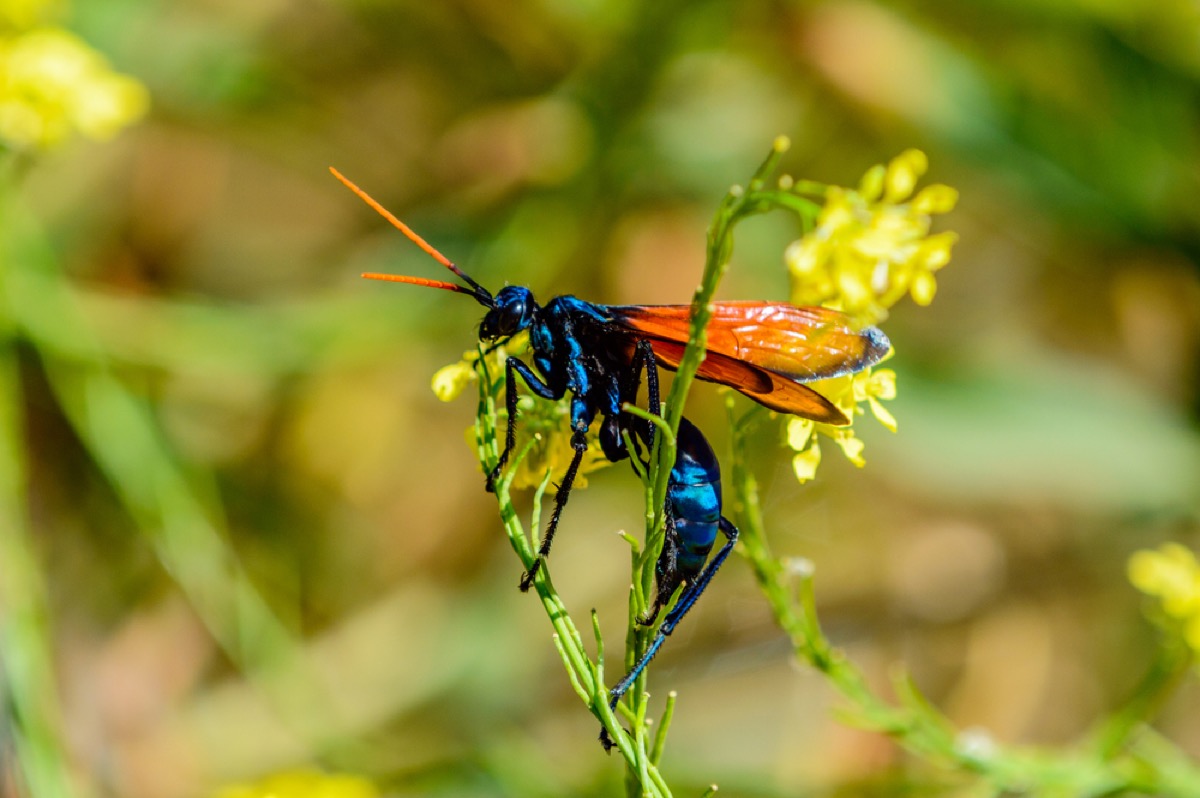
The tarantula hawk is neither a tarantula nor a hawk—it is a wasp that feeds on spiders. And it has a sting that rates as a 4.0, Western Exterminator reports. They cite Schmidt's assessment of the pain as "blinding, fierce, shockingly electric." If you've been stung by a tarantula hawk, the entomologist recommends that you "lie down and scream."
According to the National Park Service, tarantula hawks are found in the U.S., particularly in Southwestern deserts. They can even be spotted in the Grand Canyon. And for more trivia about creatures great and small, check out these Animal Facts That Will Change the Way You View the Animal Kingdom.
2
Warrior Wasp
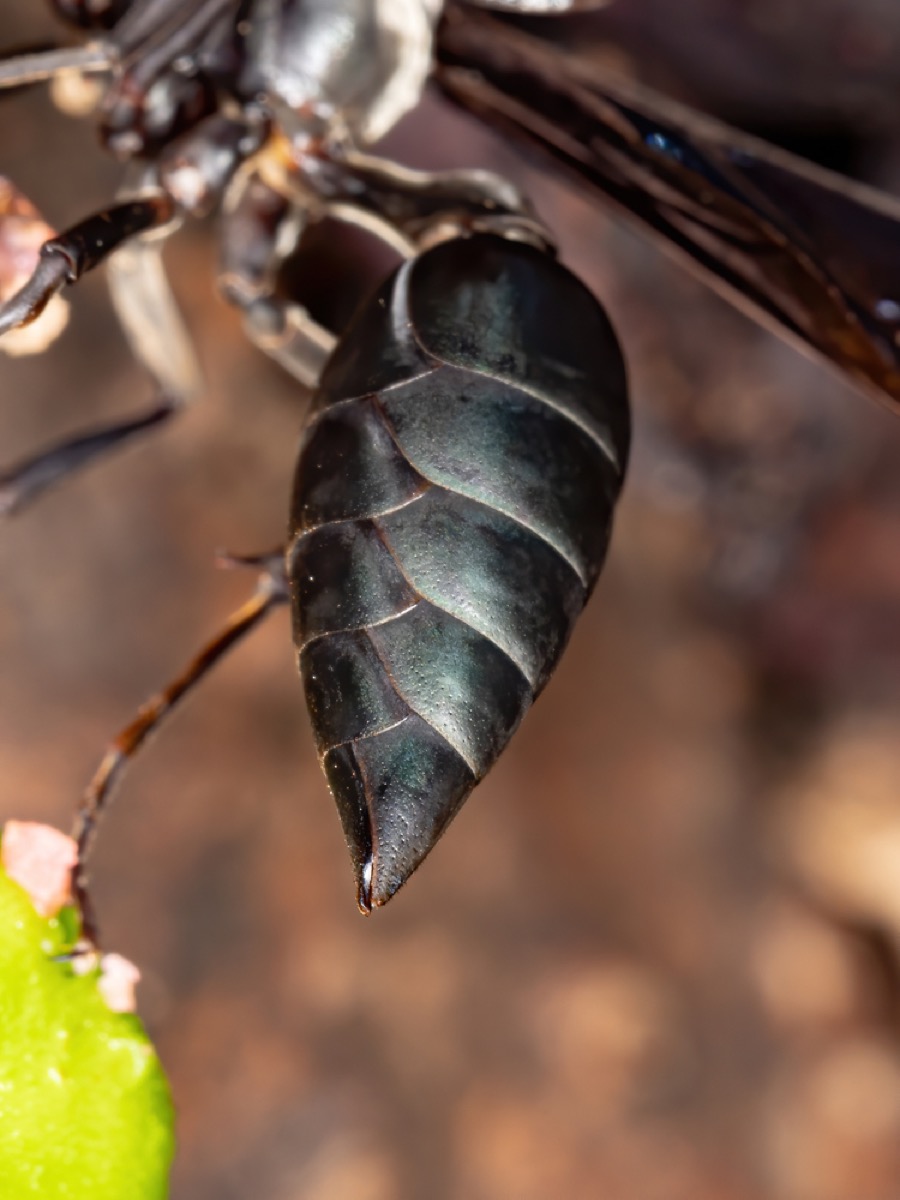
Another wasp, and another 4.0 on the Schmidt sting pain index. Per Western Exterminator, Schmidt called the pain from this sting "torture" and compared it to "being chained in the flow of an active volcano." As a 2018 study in PLoS One notes, warrior wasps are found in the tropical regions of South America, where they are "much feared due to their aggressive nest defence and painful sting." And for a creature you might not know to be afraid of, discover The Deadliest Animal to Humans in the World.
3
Paper Wasp
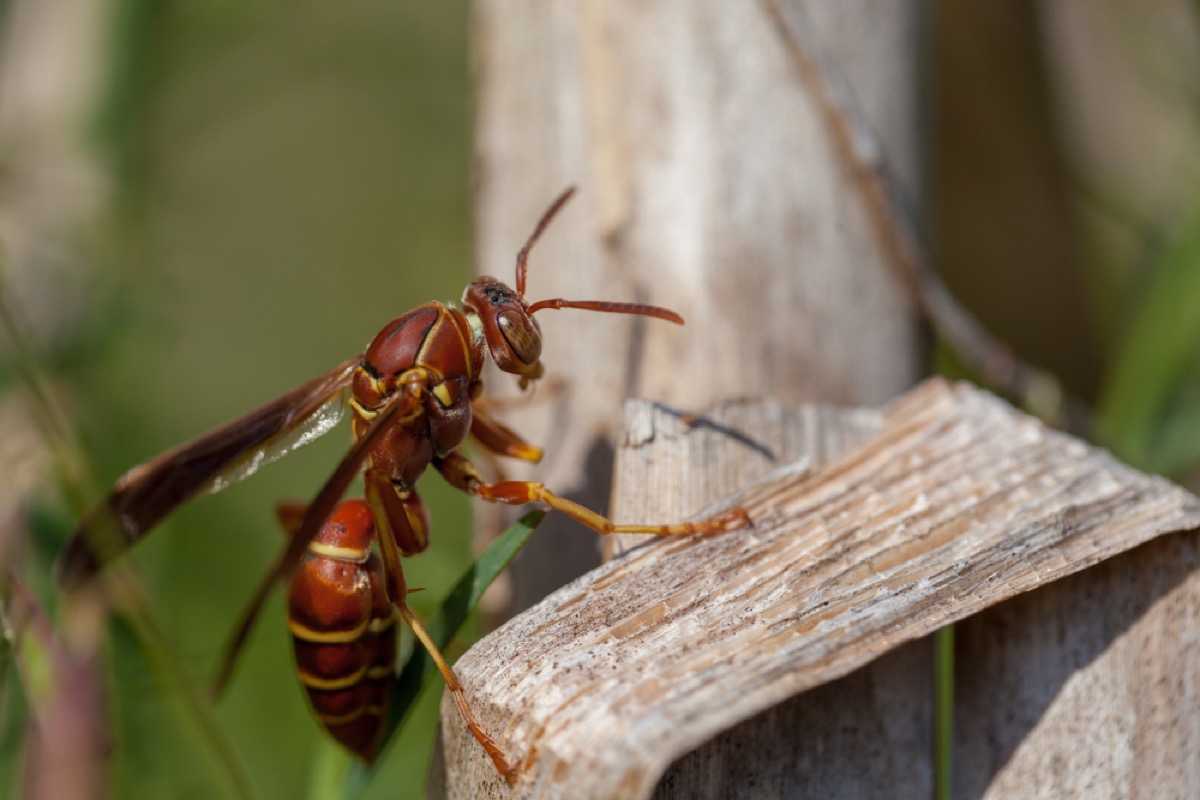
Finally, some relief. A paper wasp is only a 3.0 on the Schmidt sting pain index. Unfortunately, that's still really bad. According to Terminix, the entomologist compared this "caustic and burning" pain to "spilling a beaker of hydrochloric acid on a paper cut."
And paper wasps are more common than the other insects on this list. They are found throughout the U.S. More specifically, "most paper wasp nests are located in exposed areas beneath soffits, in the corners of windows, under awnings, under porches and beneath decks," per Terminix. And for more insects that can cause real harm, This Pest Can Do Serious Damage to Your Home in a Week, Experts Say.
4
Red Harvester Ant
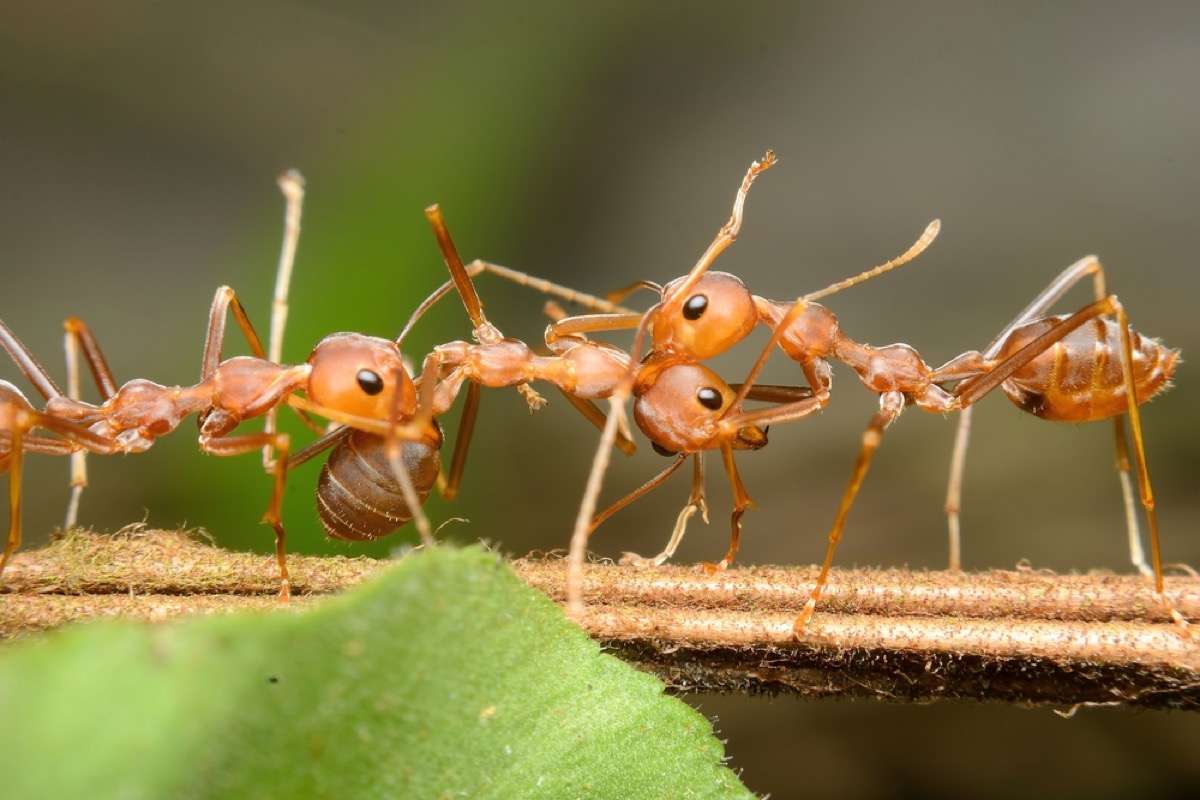
Though less painful than the sting of his bullet brethren, the red harvester ant's sting is still a 3.0. Western Exterminator reports that these insects are "reluctant to sting," which is a good thing, because Schmidt described the pain as "bold and unrelenting," like "somebody is using a drill to excavate your ingrown toenail." These ants are found in the Southwestern U.S., in states like Texas and Arizona. And for another creature to steer clear of, This Pest Could Cause a Fire in Your Home, Experts Say.
5
Trap-Jaw Ant
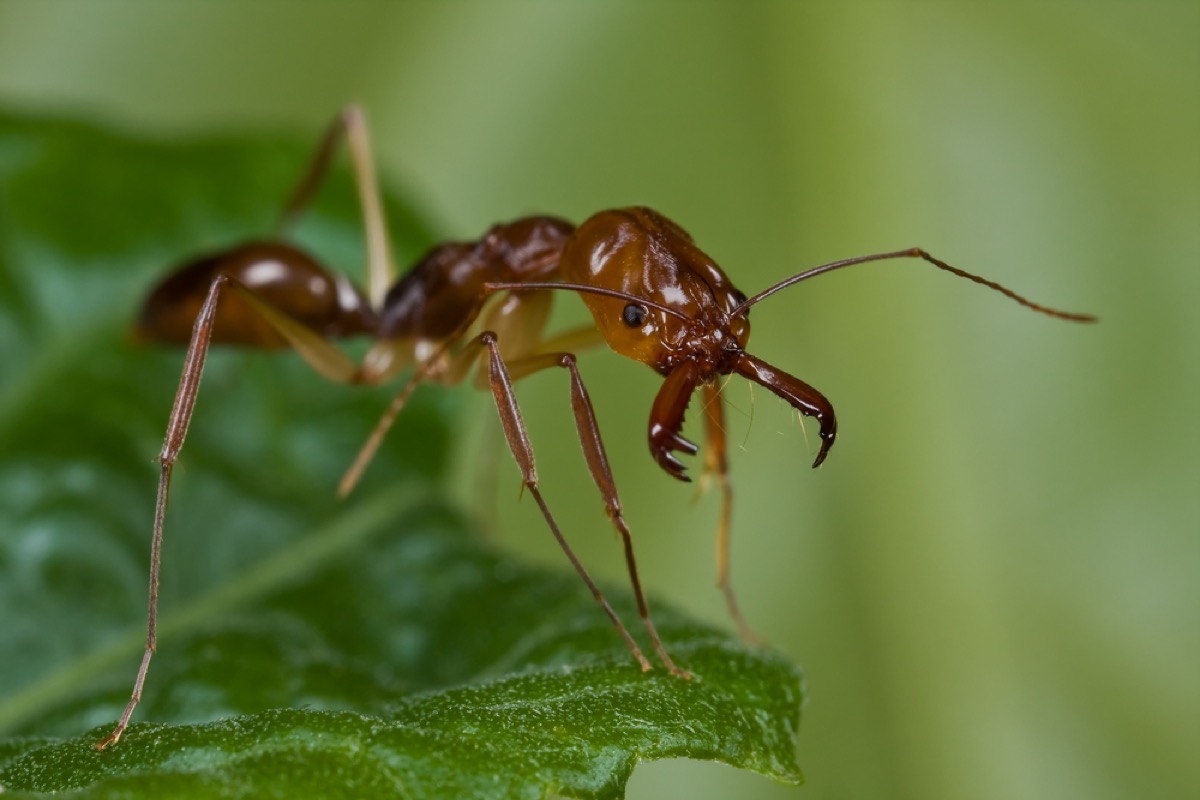
These ants certainly look scary, and hopefully that's reason enough for you to keep your distance. The pain from trap-jaw ants is "instantaneous and excruciating," though they're a 2.5 on the Schmidt sting pain index, as the Natural History Museum, London reports. Schmidt compared the sting to when "a rat trap snaps on your index fingernail."
Trap-jaw ants are found in tropical and sub-tropical regions across the globe, including South Asia and Madagascar. And for more fascinating content delivered straight to your inbox, sign up for our daily newsletter.





















